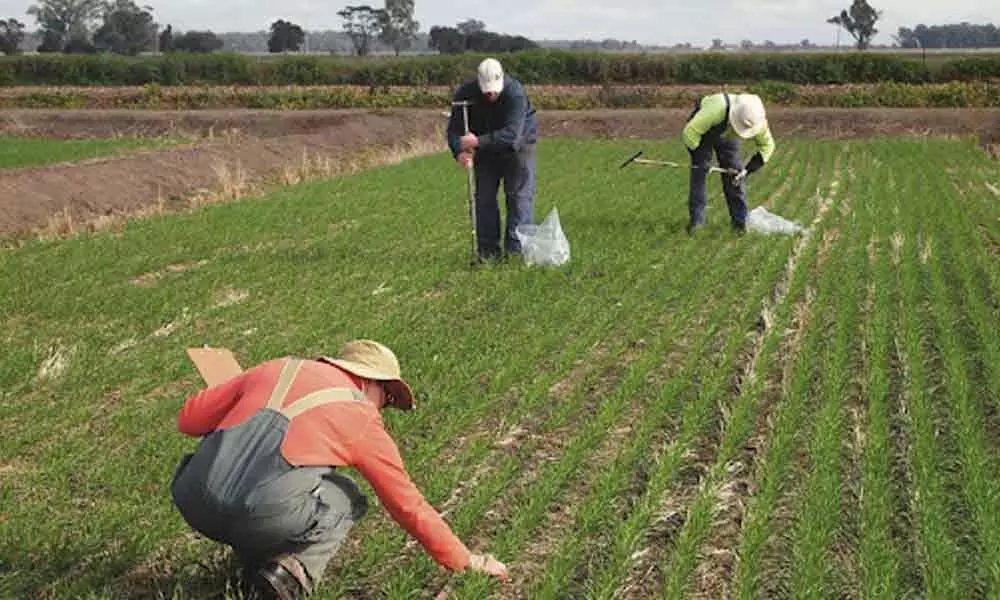Hyderabad: Chaffy grains weigh heavy on farmers
 Representational Pic
Representational PicThe effect of the neck blast disease resulted in the pathogen spread affecting the rice kernel in their formative stages making the grain light-weight or chaffy grain Such grains cause huge losses to farmers Chaffy grain problem being faced in Karimnagar, Sircilla, parts of Warangal and Nalgonda districts
Hyderabad: The calculations being implemented while weighing paddy at the procurement centres are giving sleepless nights to the farmers. According to sources, the problem of chaffy grain locally called as 'Taalu', is seen more in the paddy brought to the procurement centres in Karimnagar, Rajanna Sircilla, part of Warangal and Nalgonda districts.
Sources in the State Agriculture Department (SAD) said that the neck blast disease during the winter is one of the reasons contributed to the chaffy grain. That apart, farmers in certain parts of the State could not adequately give a final round of wetting to the standing crops, as they wanted to harvest the crop since the State government had announced procurement process.
Speaking to The Hans India, a senior official from the SAD said that the blast-infected grains become chaffy as they are poorly filled. The effect of the neck blast disease results in the pathogen spread affecting the rice kernel in their formative stages making the grain light-weight or chaffy grain.
Further, during the Rabi season, the moisture level of paddy would not be more than 12 per cent. However, if the farmers dry the paddy for longer periods then it will cause further weight loss in the grain.
"Just one per cent of the loss of moister during the drying will cause loss of 1.16 kgs of weight per quintal. Thus, instead of 17 per cent, if the moister levels fall down to 12 per cent, in all the farmers will be losing 5.8 Kgs of weight," the sources added.
That apart, the Food Corporation of India (FCI) prescribed norms like the damaged and coloured, not-fully-filled grains, low-quality moister and others to caliculate at the time of procurement. These norms can not be changed by the State.
Taking all the above factors into consideration and in monetary terms, farmers will be losing about Rs 917.50 per quintal. Providing moister meters in every village to ensure farmers can maintain the moister levels is recommended. Also, farmers should be made aware of the fact that maintaining higher quality standards than the prescribed will not fetch them any extra price.
Print receipt enabled digital weighing machines at the procurement centres and load receipt generating weighing bridge facility at every rice mill, the officials said would help in maintaining transparency and accurate weighing of paddy, and to prevent any loss to the farmers.










